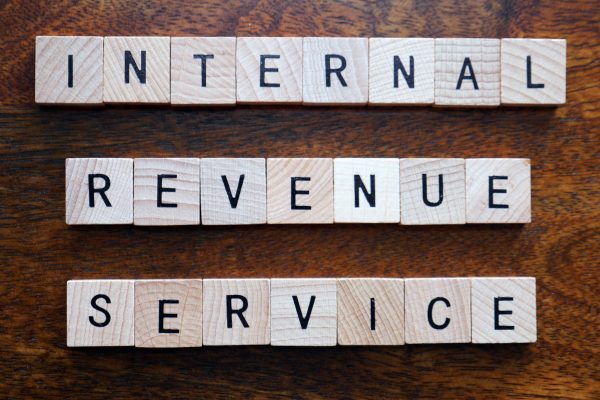

Finance
A Guide To The IRS Fresh Start Program
Modified: February 21, 2024
Discover how the IRS Fresh Start Program can give you a fresh start financially by helping you pay back your taxes and avoid tax liens with this guide.
(Many of the links in this article redirect to a specific reviewed product. Your purchase of these products through affiliate links helps to generate commission for LiveWell, at no extra cost. Learn more)
Accumulating tax debts can get the best of every struggling taxpayer. Thankfully, the IRS Fresh Start Program was created and made more accessible for people to pay back or settle their tax debts easily.
With this guide, we will help you decide if this program is right for your tax debt situation. Once you have learned what it is and how to apply for it, the Fresh Start program might be just what you need to get back on your feet financially.
The IRS Fresh Start Program
In 2009, the Internal Revenue Service (IRS) officially launched the Fresh Start Initiative (FSI) after the recession.
The goal of this program is to help taxpayers and small businesses get a “fresh start” with their tax debts by avoiding tax liens and paying back taxes. They began implementing the changes in 2011 and expanded the program in 2012. The IRS changed the rules regarding tax debt to ease the burden on taxpayers.
The IRS Fresh Start Program allows taxpayers to pay off their tax debts affordably over six years. Based on their current income and the value of their liquid assets, taxpayers make payments each month. They should pay their tax debts off in full by the end of six years.

Photo by Markus Schwedt from Pixabay
The program changed the rules by simplifying the process of paying back tax debts. It also helps taxpayers avoid many of the detriments of owing a debt to the IRS. These include interest, penalties, tax liens, seizure of assets, and wage garnishments.
Repayment Options Of The Fresh Start Program
There are repayment options that the IRS Fresh Start Program offers to taxpayers. These options help people legally and satisfactorily pay off their debts. It helps avoid further penalties and interest that can get taxpayers in financial binds.
Extended Installment Agreement
One of the two payment plans of the IRS Fresh Start Program is the Extended Installment Agreement. The IRS offers this to reduce fees and penalties for tax debt bills. It is designed for people who owe less than $50,000 to the IRS.
Extended Installment Agreement grants taxpayers up to six years to pay off what they owe without incurring additional penalties and interest. It also stops IRS collection activities like wage garnishments, tax liens, and seizure of assets.
Short-term installment plans may be available without late payment fees. These payment plans offer some penalties over the course of the arrange until the taxpayer pays the balance in full. Setting up this plan does not need any fees and terms are generally less or greater than 120 days. Long-term installment payments have set-up fees. This depends if you submit the payment yourself or if it is automatically deducted from a bank account.

Photo by Steve Buissinne from Pixabay
Under the Fresh Start Program, this option is one of the most commonly used. Taxpayers make the payment each month based on how much money they currently make. It also includes the value of the assets they have at their disposal. The payments are made affordable, so taxpayers can pay on time each month and without financial difficulties.
Offer in Compromise (OIC)
The second option that the IRS offers is the Offer in Compromise. This option is rare but made for taxpayers who are unable to settle their tax debt in full. The Offer in Compromise needs the assistance of a professional tax preparation service. It is for negotiating with the IRS to pay less than the full amount owed.
You will have to agree usually to direct withdrawal of installment payments from a bank account. Also in OIC, the taxpayer makes an offer for less than what he or she owes. This offer is sometimes substantially lower compared to the actual value of the debt.

Photo by Michal Jarmoluk from Pixabay
How to be Eligible for the IRS Fresh Start Program?
You need to comply with a few qualifications for the Fresh Start Program. Several factors generally determine one’s eligibility. These are the following:
1. Be compliant in filing tax returns.
2. Self-employed individuals must show a drop in their net income of 25 percent or greater.
3. Earnings for single filers must be under $100,000 per year, and married couples filing jointly must be under $200,000 per year.
4. Not having debt again after agreeing upon a plan.
5. You must owe less than $50,000 dollars overall in taxes.
6. You must prove you do not have the money or assets to pay your tax debt.
7. If you want an Offer in Compromise, you must disclose your full financial statement.
8. You must not be involved in an ongoing bankruptcy proceeding.

Photo from Unsplash
How to Apply for the IRS Fresh Start Program?
You must follow the guidelines above established by the IRS to apply for the IRS Fresh Start Program.
1. First, you must file all of your current and back tax returns.
If you have outstanding tax returns you have yet to file, you cannot request any of the repayment options. It is also important that you must resolve to file all of your future returns on time while you are enrolled in the IRS Fresh Start Program.
2. Go to IRS.gov to enroll in the Fresh Start Program.
After filing all of your tax returns, you can now enroll in the program. Use the Online Payment Agreement tool on the official IRS website. This online tool allows you to select the repayment option that interests you.
You can also request to be part of the IRS Fresh Start Program even if you prefer not to enroll online. Payment plans online or by filling out and submitting IRS Form 9465.

Photo by Trending Topics 2019 from Flickr
3. In the IRS Fresh Start toolbox, each tool comes with a different application route.
Some IRS programs just need a few minutes in front of your computer. But others may require up to two years before it gets approval. Offers in Compromise need you to file Form 656 and a 433-A or 433-F to start the process. While installment plan applications will vary depending on how much debt you owe and whether you are an employee or business owner.

Photo from Max Pixel
Taking advantage of the IRS Fresh Start Program is a good way to ease and reduce your taxes. One of the goals of this program is to make it easier and more accessible for taxpayers to deal with their tax debts themselves. You can also directly negotiate with the IRS if you prefer. Ultimately, this program can help you settle your debt for less than what you originally owed.














